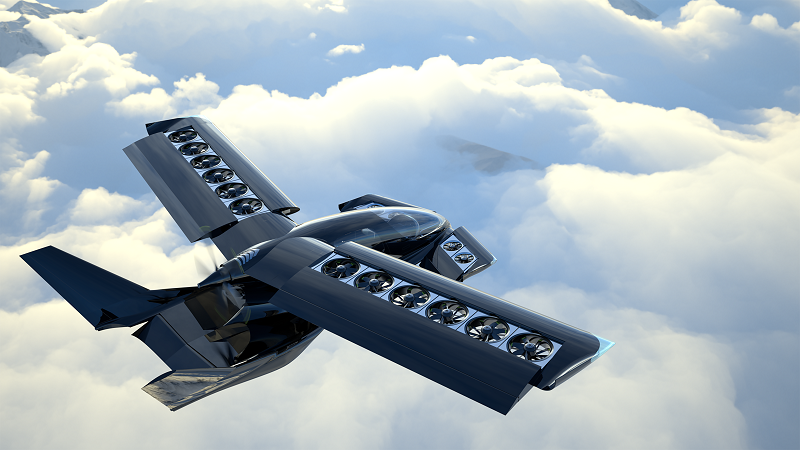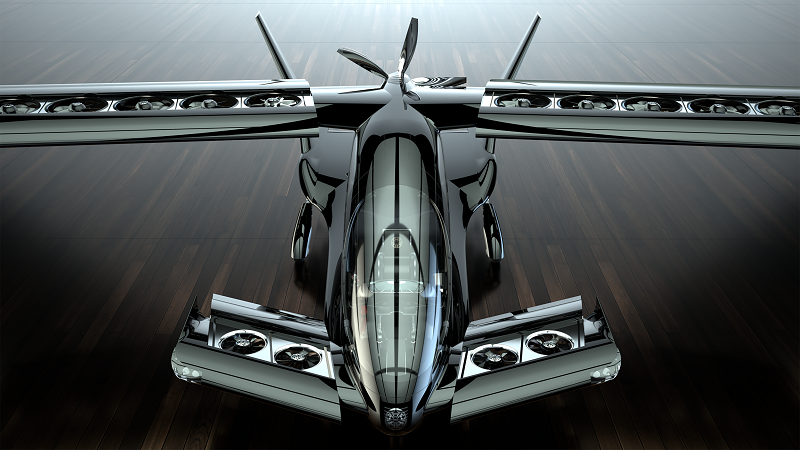Revolution.Aero Uplift: Broadening Horizons with Cavorite (X5)

exc-605df287d37d986cb5b67304
There is no doubt that science fiction writer HG Wells was ahead of his time. But he did not know by how much. His character Dr Cavor in the 1901 novel, The First Men in the Moon, invented a gravity-defying substance called cavorite.
Some 120 years later, Canada-based startup Horizon Aircraft is calling its five-seater eVTOL the Cavorite X5. Horizon is targeting long range, regional air travel. The vehicle has been designed to carry four passengers and one pilot.
Brandon Robinson told Revolution.Aero he has always been an aviator. As have the two generations before him. His grandfather was a war pilot and father is the co-founder and lead engineer of Horizon. Robinson flew before he learned to walk – at six-months-old – and went on to fly F-18s for the Canadian Air Force.
Brian Robinson, Brandon’s father, has always been a mechanical engineer. He once built an aircraft from scrap metal and has an eye on manufacturing anything he designs, said Brandon.
About two years ago, the company started working on the Cavorite X5, a machine with a “special wing system” designed to spend “99% of the time like a normal aircraft”. It has now completed 200 test flights with its subscale prototype.
Robinson said: “Most eVTOLs carry around a lot of batteries for that vertical take-off and landing portion. And then throughout the entire mission they have very high drag, very slow configurations.”
Horizon’s solution lay in the way birds fly: “long, efficient, low drag, normal wing-borne lift”.
“The hybrid electric power system allows us to save a huge amount of battery weight,” he said. The eVTOL is powered by an electric motor coupled with a conventional gas burning engine.
“We get a lot of push back until people realise it’s hybrid electric. Gas has 40 times the energy density,” said Robinson. “They say, ‘No wonder you guys can go as far as you can go. Because one, you return to normal aircraft mode and two, you’re carrying gas on board. Those two things make a lot of aerospace engineering sense.”
The Cavorite hopes to carry passengers over 280m/h (450 km/h) over a 310-mile (500 kms) range.
Cavorite X5, a machine with a “special wing system” designed to spend “99% of the time like a normal aircraft”. It has now completed 200 test flights with its subscale prototype. Courtesy: Horizon Aircraft.
Operating and variable costs
Horizon has projected the operating costs involved to fly the Cavorite X5 in a number of different models.
Robinson said: “I like to point simply to the aircraft’s variable operating costs. Where a helicopter might cost about $1000/hr to operate (we will exclude the amortised costs of the airframes, even though Cavorite X5 will cost less per unit), we are about 15% of that so about $150-$200 per hour.”
These figures include maintenance costs spread over a reasonable operational year (about 400-500 hours) and fuel costs. Robinson told Revolution.Aero the figures were much lower because the vehicle uses an internal combustion engine as opposed to a turbine.
“In general, other research corroborates this demonstrating anywhere from a 15%-26% operational cost savings over a helicopter,” he added.
When carrying four passengers over 100-mile trips (average) at 220mp/h (350km/h), Horizon estimates $2.75 cost per seat mile for the customer. Robinson said the figure is based on the low-cost hybrid power system and efficient forward flight over regional (i.e., 100+ mile) ranges.
Competitors Archer Aviation and Joby Aviation are expected to charge about $3.30 and about $3.00 per seat mile for their services respectively.
A recent merger with autonomous vehicles company Astro Aerospace has meant Horizon will have the resources to build a larger prototype in the next few months, according to Robinson.
The merger is also set to accelerate Astro’s passenger carrying Alta and Elroy programmes.
”The testing of the Cavorite X5’s sub-scale prototype has exemplified to the global eVTOL market that Horizon’s engineered design is the new standard,” said Astro CEO Bruce Bent. “The soon-to-be completed acquisition of Horizon is expected to add tremendous value to the combined entity as we move towards the expected commercial launch of the X5 into the growing $46.7bn eVTOL aircraft market.”
Investor box
Binding agreement of acquisition with Astro Aerospace
Use cases
Early use cases for Horizon’s aircraft will be to replace some of the current helicopter missions.
“Any missions that do not require long hover durations but are currently served by helicopters – that’s going to be the very short-term replacement,” said Robinson.
In the longer term, Robinson said the company could look into last mile air cargo, medical evacuation (medevac) and disaster relief missions.
The design was conceptualised with large cargo space in the back.
First customers are likely to be private individuals, followed by commercial carriers that “see immediate replacement for a significant portion of the helicopter mission sets”.
The Cavorite X5 is estimated to be priced at around $3.5m, which comes in slightly lower than competitor Archer Aviation, 200 of whose vehicles were pre-ordered by United Airlines at $5m a unit. Robinson also said it was lower than the $5m-$7m helicopter range. Entry to commercial service will be in the next few years, based on the plans decided with Astro.
The Cavorite will be priced at $3.5m, which comes in slightly lower than competitor Archer Aviation Courtesy: Horizon Aircraft.
For vertical flight, the aircraft’s wings slid open to reveal the fans. These will close for forward flight. The Cavorite is also able to take-off from a runway, should the vertical flight function be affected.
Robinson said the company will consider full autonomy and all-electric flight in the longer term.
HG Wells would be thrilled, especially if an eVTOL manufacturer was to go to the Moon. Or maybe some SPACs will get there first.








